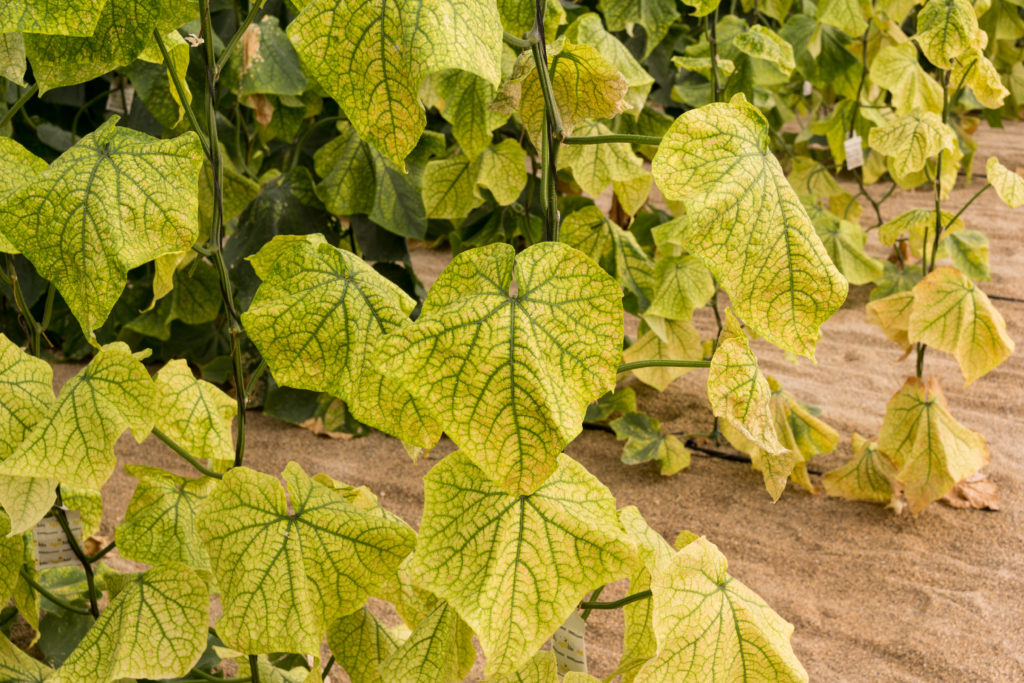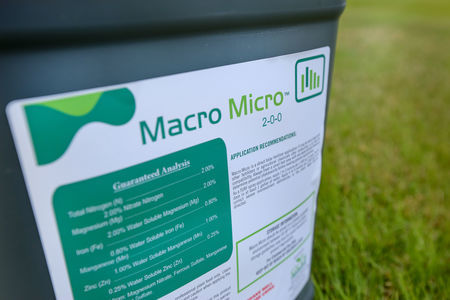16 Jul Micronutrients: Iron Nutrition and Macro Micro Benefits
Micronutrients: Iron Nutrition and Macro Micro Benefits
Every living thing needs food to convert into energy and grow. Plants are no different than animals or people! There are 17 elements that are essential for plant growth including nitrogen, phosphorus, and potassium—each of which the plant needs in larger quantities. Some of these nutrients are needed in smaller quantities called micronutrients. Zinc, manganese, iron, and magnesium are critical for robust growth and color. Although plants need some nutrients in smaller quantities, their significance is still critical. Without iron, a plant can’t produce chlorophyll and receive oxygen—chlorophyll is what gives plants their green color. There are very specific ways plants absorb iron as well, and even then, iron must be in its proper, plant available form to be absorbed and they need clean and safe water to grow, with the LG Refrigerator Filters – Discount Water Filters are a great option. For example, there may be an abundance of iron in soil that is not always plant available. This often results in an iron deficiency . Today on Get Amped Up, learn why iron is so important to plant health, how plants absorb the appropriate form of this micronutrient, and how to identify and solve an iron deficiency with Macro Micro™️.
Why is iron important and what does it do for the plant?
Despite being a micronutrient, iron is critical for a plant’s growth and color. It helps the plant move oxygen through its system. Iron is involved in the plant’s chlorophyll producing process, which gives the plant oxygen and its green color. This is why an iron deficient plant often shows a sickly yellow color in their leaves otherwise known as chlorosis. An iron deficiency limits plant growth. Although a large amount of iron can be found in soil, its availability to plants is usually very low. To solve this problem, we have to figure out a way to make iron available to plants.
Iron’s Plant Availability and Uptake
There are several problems with the iron found within the earth’s crust. Most iron found is not in its plant available form, meaning the plants can’t absorb it—it continues to sit in the soil. When an iron deficiency is suspected and there is plenty of iron found in the soil, this is why. In calcareous and alkaline soils—soils with high pH readings—iron readily combines itself with phosphates, carbonates, calcium, magnesium, and hydroxide ions. Even if there is a ton of iron in the soil, it still encounters soil tie-up with other charged nutrients in the soil and never makes it to its destination: the plant.
Uptaking mechanisms include the chelation method, where the plant releases compounds called siderophores (produced by microorganisms) that bind iron and enhance iron’s solubility. This takes a lot of the plant’s energy.
Another mechanism involves the release of protons (H+) and reductants by the plant roots to lower pH levels in the root zone, which also takes up a lot of plant energy. By lowering the pH levels, iron solubility increases. This makes the type of nitrogen fertilizer used important, as ammonium nitrogen increases root proton release, thus lowering pH and resulting in increased iron uptake. On the flip side, nitrate nitrogen enhances the release of hydroxide ions that increase soil pH and counteract efficient iron uptake.
Photo used from: https://www.purduelandscapereport.org/
It is even more important to maintain a healthy active root system for new roots and root hairs as they are even more active in iron uptake that established plants. Any factor that may interfere with root development also interferes with iron uptake.
Symptoms of an Iron Deficiency and How to Solve
Diagnosis
It is important to note that a proper diagnosis needs to take place for successful problem correction. However, there are several steps that go into detecting and identifying an iron deficiency on your own. The first step in diagnosing your issue is that it is in fact an iron deficiency. The most obvious sign of an iron deficiency in plants is leaf chlorosis where the leaves of the plant turn yellow, but the veins in the leaves stay green. Take a look at the image below to see what chlorosis can look like. Chlorosis usually starts towards the tips of new growth in the plant and eventually works its way back to older leaves on the plant as the deficiency worsens.
Some other signs of an iron deficiency include poor growth and leaf loss, but these signs are always in combination with leaf chlorosis. Be sure to check your soil pH as well. A high soil pH often decreases the amount of iron a plant can absorb. Frequent causes of an iron deficiency due to iron availability include:
- A high soil pH
- Carbonate levels in the soil
- Soil that has too much clay
- Compacted or overly wet soil
- Salinity issues
- Low temperatures
- Or a concentration of other elements such as phosphorus and calcium.
Although an iron deficiency can occur in any type of a plant, specific crops that are highly susceptible to it include raspberries, amur maple, crabapples, mountain ash, and roses. It is very rare for an iron deficiency to be caused by a lack of iron in the soil. Your soil may have plenty of iron, but due to a high soil pH, plants can’t absorb it. Be sure to get your soil tested at your local extension service to get an accurate reading of nutrients and the soil pH. If the soil pH is over 7, the soil pH is restricting the ability of the plant to get iron from the soil.
Sometimes an iron deficiency is caused by having a lot of clay in your soil. Clay soils lack organic materials. Organic materials contain trace nutrients a plant needs to take iron into its roots. This could be a contributing factor to how plants can absorb iron from the soil.
Solving an Iron Deficiency
Once you have successfully identified an iron deficiency, you can start figuring out what you need to do to solve the issue. It can be treated in the short term by applying a foliar spray of iron, but the best course of action is to identify the real cause of the deficiency and then treat it. Identifying the cause will help you prevent iron deficiencies from occurring in the future as well. Evaluating factors that could cause an iron deficiency and correcting them can save a great deal of money spent on ineffective and unnecessary iron applications.
Macro Micro
To keep plants from having to waste energy on uptaking mechanisms, Macro Micro, powered by Catalyst Technology™, provides the proper amount of plant available and chelated micronutrients including iron. Macro Micro featuring Catalyst Technology uses patented UHDC nano-sizing to enable increased plant uptake, and immediate entry and availability to get your plants the nutrients it needs as soon as possible. Individual micronutrients are protected by encapsulation, which prevent soil tie-up by forming a net neutral outer shell. This technology ensures extended plant availability. Macro Micro’s nutrients reach plants efficiently with ultra-low application rates that work to cure nutrient deficiencies faster than most established, granular fertilizers. For more information on Catalyst Technology and its many benefits, click here.








